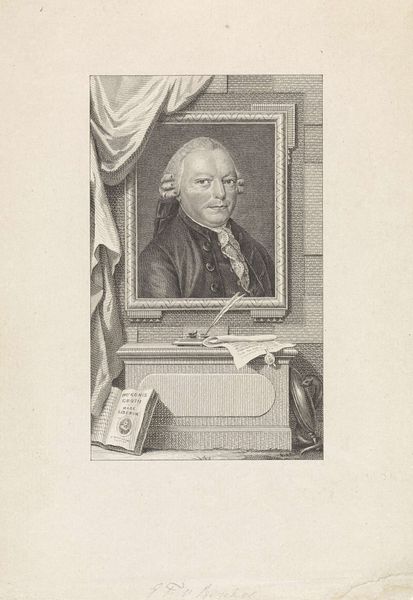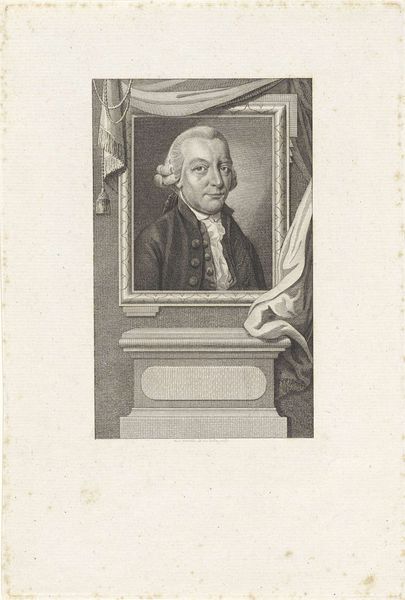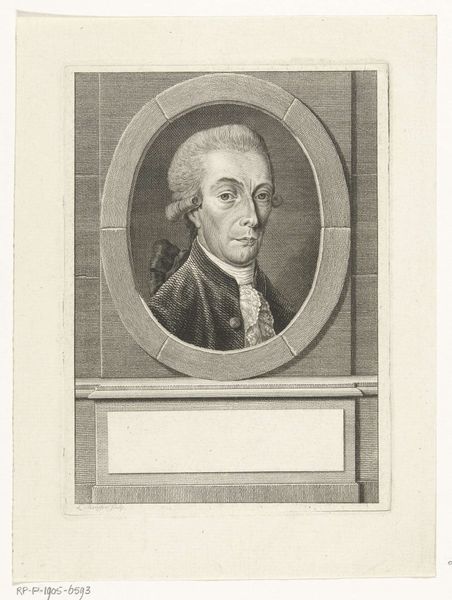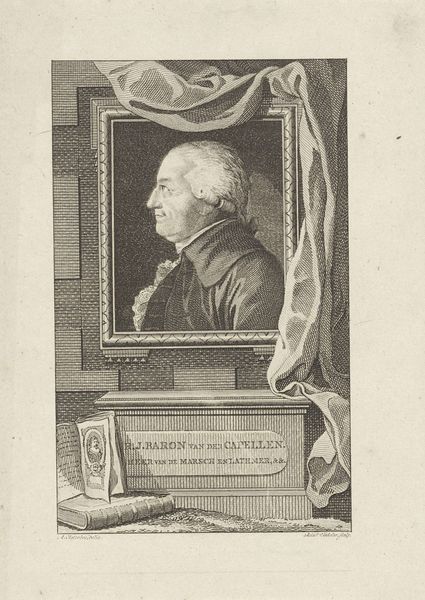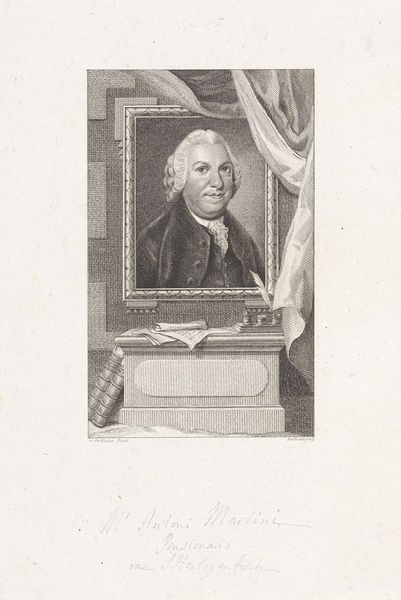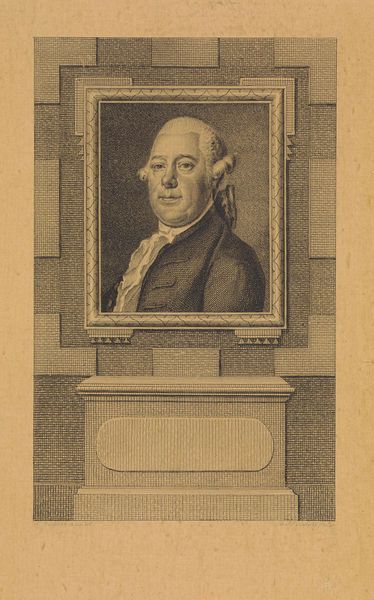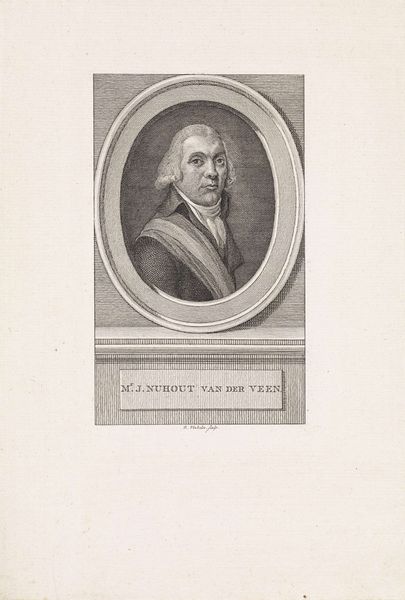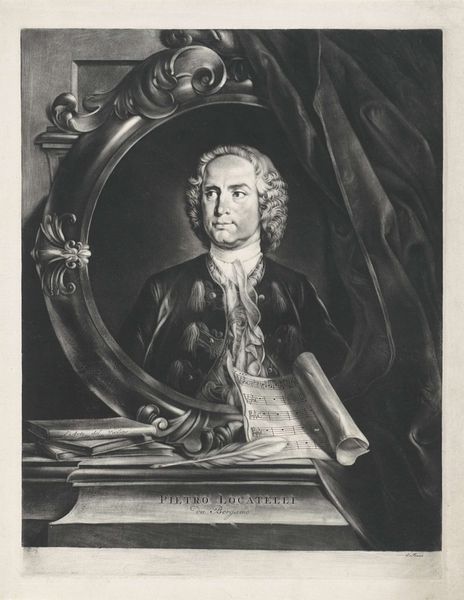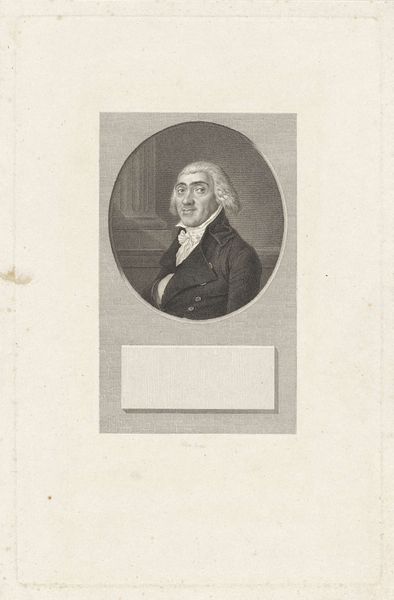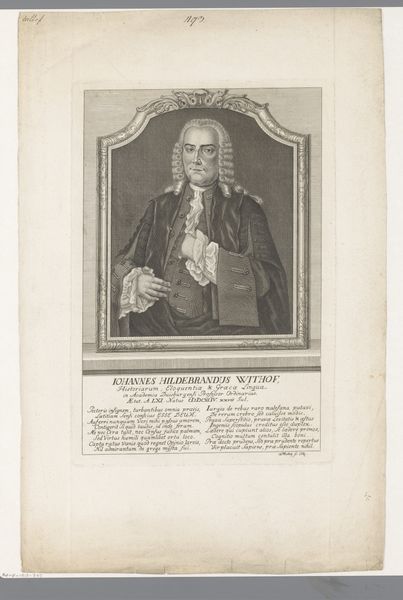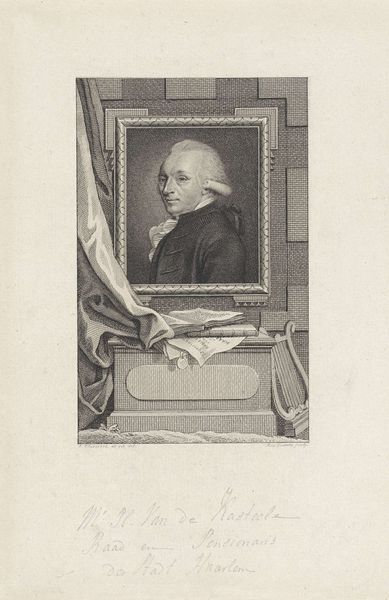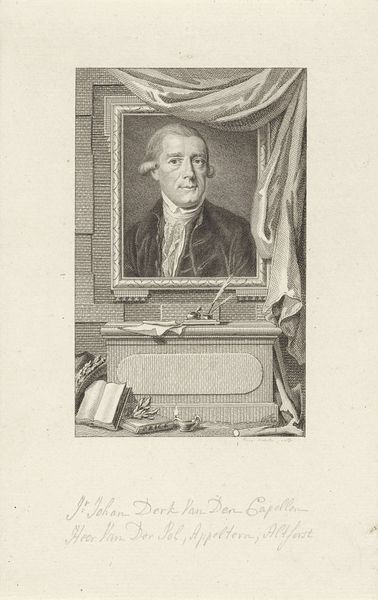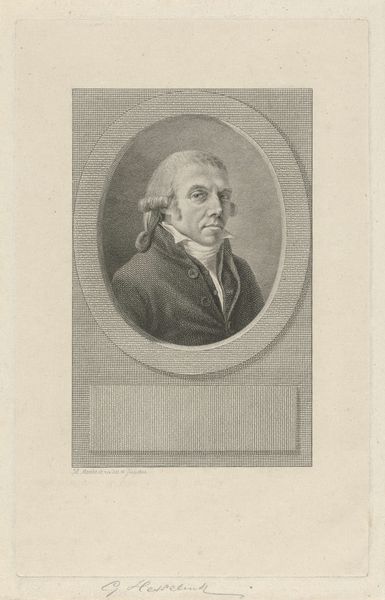
print, engraving
#
portrait
#
neoclacissism
# print
#
old engraving style
#
pencil drawing
#
engraving
#
realism
Dimensions: height 215 mm, width 155 mm
Copyright: Rijks Museum: Open Domain
Curator: This print, “Portret van Carel Wouter Visscher”, realized by Reinier Vinkeles between 1786 and 1809, shows its subject in front of what seems like a full arrangement of props: the man's depicted in frame sitting on top of a bigger pedestal, featuring a place for writing a name and being surrounded by books. Editor: Oh, that's fascinating. The initial feeling I get is one of constructed authority. Like, here's a man carefully posed within layers of symbols designed to communicate importance, knowledge, and probably prosperity. Curator: Precisely. Vinkeles' engraving makes incredible use of Neoclassical elements here; everything from the architectural framing to the restrained color palette lends it a air of gravitas and ordered calm. Note also how he's presenting his knowledge in front of open books: This whole work emphasizes enlightenment thinking. Editor: The books are definitely speaking volumes—literally and figuratively. It’s as if the engraver wants us to know Visscher wasn't just a pretty face; he was a scholar, a thinker, deeply rooted in intellectual tradition. The inclusion of the quill on the pedestal really seals that idea! Curator: Yes! And let’s consider Visscher's expression; somewhat impassive, perhaps even a bit severe. It reinforces the idea of rational thought and the dominance of reason, which was typical during the rise of neoclassicism. Also look to the clothes depicted: There is nothing screaming opulence! It's pretty plain overall. Editor: His look seems somewhat plain and modest to my eye, fitting nicely into that image of restrained respectability that was appreciated at that time. Funny how much "saying nothing" becomes the loudest statement. Curator: Exactly. The lack of excess and plain dressing says even more in a context like this: a silent claim to virtue. The print serves as a lens into late 18th century society and values of that specific point in time! Editor: Thinking about the print in our present context makes me wonder, how do we build our own visual symbols of authority now, with completely different materials and social ideals. Curator: An important and relevant question to be raised in connection to such artwork, I agree! One which highlights the temporal aspect to symbols: We might want to change them according to different societal standards and the passing of time!
Comments
No comments
Be the first to comment and join the conversation on the ultimate creative platform.
